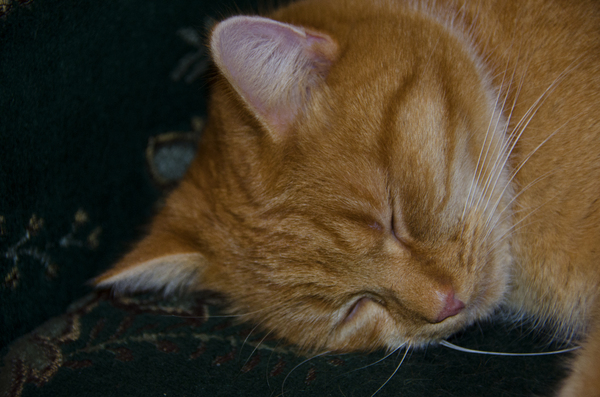Leading Recycled Paper Litter Choices for Your Cat
Wiki Article

In the last few years, the trend towards eco-conscious living has actually reached every aspect of our lives, including our beloved pets. As family pet owners end up being increasingly familiar with the environmental effect of their furry friends, the demand for natural cat litter has actually risen. However just what is natural cat litter, and why should animal owners consider making the switch? In this extensive guide, we'll look into the world of natural cat litter to explore its benefits, options, and whatever else you require to know.
As environmental consciousness grows amongst family pet owners, the mission for sustainable cat litter options has taken spotlight. Traditional clay-based litters, while popular, pose ecological concerns due to their non-biodegradable nature and the environmentally extensive procedure of clay extraction. This has led to a surge in interest for eco-friendly options that guarantee to be kinder to the planet without compromising on efficiency. This short article dives into the world of cat litter alternatives, highlighting their advantages, disadvantages, and what to consider when making the switch.
Clay-based cat litters, especially those that are non-clumping, have been the go-to option for decades due to their absorbency and smell control residential or commercial properties. However, their ecological footprint is concerning. The mining of salt bentonite, an essential element in clumping clay litter, is disruptive to communities. Additionally, these litters do not deteriorate, adding to land fill waste. Additionally, the dust from clay litters can be hazardous to both human and feline respiratory systems, triggering pet owners to look for healthier, more sustainable alternatives.
Biodegradable alternatives are made from a variety of plant-based products, including recycled paper, wood pellets, corn, wheat, and walnut shells. These materials not just break down naturally in the environment but also typically come from renewable resources, minimizing the ecological effect associated with their use.
Recycled Paper Litter is made from post-consumer paper waste, became pellets or granules. It's highly absorbent, virtually dust-free, and ideal for felines and owners with respiratory level of sensitivities. However, it might not control odors as successfully as other materials and typically does not clump.
Wood Pellets, sourced from lumber scraps, use a natural pine scent that reduces the effects of odors without synthetic fragrances. They're low in dust and take in moisture well, turning into sawdust when wet. The sawdust can be sorted out, making the litter last longer, though some felines might not prefer the larger pellet size.
Corn and Wheat Litter are understood for their clumping ability, comparable to clay litters, making clean-up easy. They're naturally degradable and compostable, with natural enzymes that assist control smells. However, they can be costlier cat litter mat than traditional litter and may bring in bugs if not stored effectively.
Walnut Shell Litter uses the natural absorbency of crushed walnut shells, using excellent odor control and clumping properties. It's dust-free and eco-friendly but can be more expensive and might not be ideal for cats with nut allergic reactions.
Silica gel litter, made from silica dioxide sand, oxygen, and water, is another alternative to clay. It's highly absorbent, controls odors efficiently, and is low dust. While not biodegradable, it's lighter and can last longer than clay litter, needing less regular changes. However, its greater rate point and the texture, which some cats may find off-putting, are factors to consider for potential cat litter pellets users.
Cats can be particular about their litter. Slowly present the new litter by mixing it with the old, increasing the percentage of the brand-new litter over time to allow your feline to change.
Ecological Effect: Consider the lifecycle of the litter product, from production to cat litter scoop disposal, to guarantee it lines up with your ecological worths.
Health and Safety: Select dust-free or low-dust choices to secure both your and your feline's breathing health. Ensure the litter is totally free from chemicals or scents that might hurt your family pet.
Expense: While some alternatives may be more expensive upfront, their longevity and the amount required per change can make them affordable in the long run.
The Future of Cat Litter Alternatives
The pattern towards sustainable family pet care items is growing, with developments in cat litter options blazing a trail. Future advancements might consist of more effective biodegradable materials, improved odor control and clumping technologies, and even litter made from upcycled waste products. As consumer demand for environmentally friendly products increases, we can expect to see a wider variety of alternatives that don't compromise on convenience or performance.
The shift towards sustainable cat litter options is not simply a pattern however a reflection of a growing awareness of ecological problems amongst animal owners. While traditional clay litters have actually dominated the market for years, the variety of naturally degradable and ingenious products now readily available deals promising options for those looking to decrease their ecological footprint. By considering aspects such as environmental effect, health and safety, and cat approval, family pet owners can make informed decisions that benefit both their furry companions and the planet. As the market develops, the future of cat litter looks greener than ever, promising a great deal for felines, their owners, and the environment.